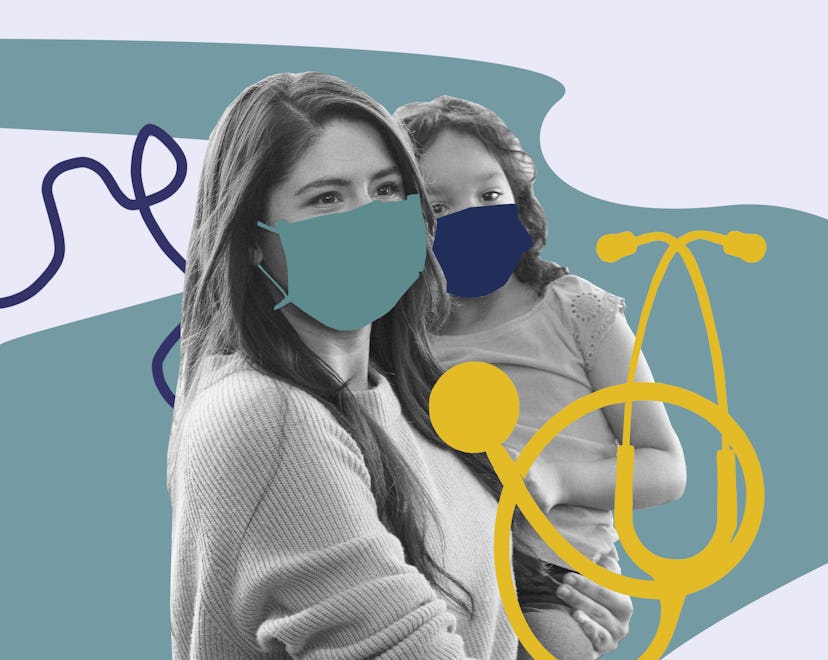Parenting

These Are The Most Common Reasons Kids End Up In Urgent Care
A leading pediatric emergency physician explains when to go to urgent care, the ER, or your kid’s primary care physician.
One thing all kids have in common is that they get sick or injured at literally the worst possible time. No parent makes it through eighteen years without a middle-of-the-night fever, a broken wrist, or an ill-timed stomach virus wreaking havoc on their plans and routine. If only kids would break their bones and acquire their viruses from Monday to Friday during business hours. Wouldn’t that be convenient?
But that’s not how it works. Life happens outside of our pediatrician’s office hours. For a serious emergency such as a seizure, we all know to rush to the ER. But it can be tougher to decide whether our kids can wait to see their usual doctor or if they need to be seen more immediately at an urgent care center.
Dr. Christina Johns, M.D., is one of the country’s leading pediatric emergency doctors and Senior Medical Advisor for PM Pediatric Care, the largest pediatric emergency care group in the U.S., providing urgent care via 77 locations, telemedicine, and behavioral health teletherapy.
She is an expert on pediatrics and urgent care, and she agreed to talk to Romper to help us clear up any urgent care confusion.
Dr. Johns tells Romper that she sees the usual suspects on a daily basis: fevers, coughs, and colds.
You know, all the viral stuff that keeps kids from attending school. They’re the most common reasons people bring their kiddo to urgent care. Pneumonia and rashes bring a lot of children into urgent care, and so do minor injuries requiring immediate attention.
“We see a lot of sports injuries and cuts requiring stitches,” says Dr. Johns.
No parent wants to spend hours in urgent care, but we don’t want to be “helicopter parents” either. As a pediatrician and a mom, Dr. Johns knows the struggle. “There are some very basic safeguards that protect kids from unnecessary harm while also giving them the freedom to live their life,” Dr. Johns says.
Stay up-to-date on all of your vaccines. Make sure all your kids’ prescriptions are accurate and on hand. Listen to your pediatrician when they give you what Dr. Johns calls, “anticipatory guidance,” like urging you to cover electrical outlets, anchor furniture, use helmets appropriately, and discuss risky behavior with older kids.
Another super important part of keeping your kid safe, injury-free, and out of urgent care is a good line of communication. “Be the type of parent that a kid can come to without fear of immediate harsh criticism for their decisions, even when they are unwise,” says Dr. Johns.
Freedom to experience the world is great, but Dr. Johns recommends that parents monitor a few specific activities like hawks.
I bet you thought a giant warning about trampolines would top the list, and it does. Sort of. Dr. Johns isn’t completely anti-trampoline, but she has some rules like limiting the activity to one kid at a time, no flips allowed, and diligent use of protective nets. Essentially, it’s your job to make the activity as safe as possible, and have an adult watching every minute.
The same goes for swimming: No kid should ever be allowed to swim without an adult actively watching.
Dr. Johns does have one safety absolute, which is to just say no to any and all baby walkers that include wheels. “I’ve seen too many skull fractures and other injuries from young children who catapult down steps head-first in one of these devices.”
Dr. Johns is also wary of ATVs for big kids. “Big injuries happen often on these vehicles.”
It can be tricky to decide whether a problem is an urgent care type situation or if it can wait for your regular doctor.
Dr. Johns has some pointers to figure that out. “When in doubt, ask yourself: Will an additional day or two make a significant difference for my child?” If the answer is no, you can make an appointment with your regular doctor. If the doctor’s office is closed and your child needs same-day attention, urgent care is your best option.
Dr. Johns tells Romper, “If the treatment for your child’s medical condition would result in an actionable treatment that would make them feel better quickly, take them to urgent care.”
Urgent care isn’t an alternative to a primary care doctor; it is a health care partner for your kiddo.
“Urgent cares do not seek to compete with or replace primary care providers; they are simply there in partnership with them to help support the times when emergencies inevitably strike,” says Dr. Johns.
Your child’s regular doctor knows them well. They have access to a complete medical history for your child, and are the ideal person to see your child if at all possible. A good urgent care wouldn’t seek to undermine that relationship.
Dr. Johns knows that not all urgent cares are created equal.
“We are aware of the data indicating that children have better health outcomes when treated by a pediatric trained clinician, which is why PM Pediatric Care focuses exclusively on children and young adults ages 0-26, and not older adults.”
We all want to minimize the time we spend in urgent care, but when life happens, it’s a good idea to have someone who is trained in the care of children and young adults on speed dial. Dr. Johns urges parents to keep contact info for your closest pediatric urgent care, children’s hospital, and emergency department on hand, just in case.